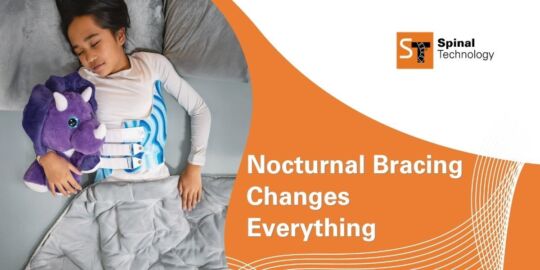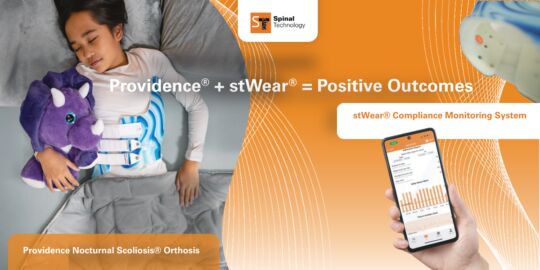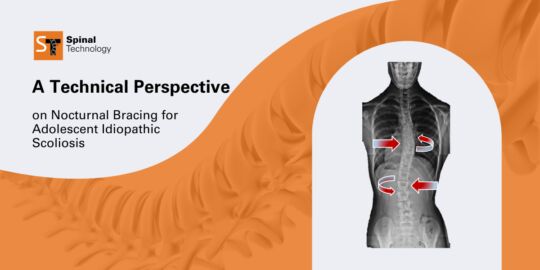Scoliosis Bracing – Growth Plate Physiology
Orthotic Management of Adolescent Idiopathic Scoliosis (AIS)
Section 2
Understanding the mechanics of scoliosis and the impact of asymmetrical loading on the spine, Hueter-Volkmann law illustrates a few things about the nature of curve progression and the requirements for halting or reversing that course. The longitudinal deformation of vertebral bone growth can most likely be attributed to the imbalance of loading across the growth plates prior to reaching skeletal maturity. Compressive forces on the concave side of the curve will effectively decrease the rate of growth, while distractive unloading on the convex side will accelerate growth. The magnitude of this discrepancy has been estimated to reach as high as 40% or greater (Stokes et al.).
Related Links
Need more information?
Contact our Customer Service Team at 800 253 7868. We'll be glad to help you with your question.
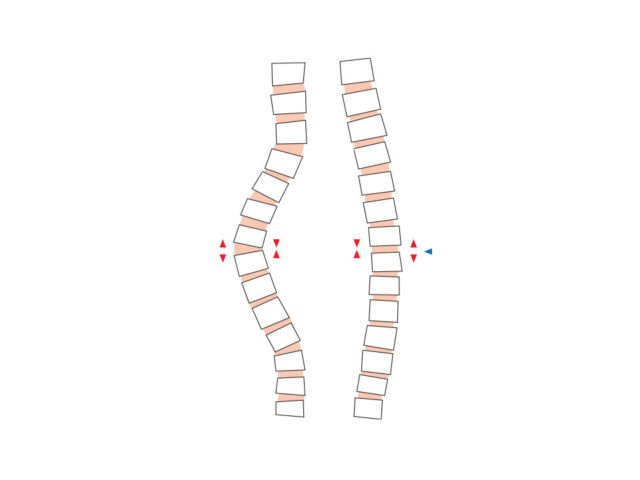
Heuter – Vollmann Law showing longitudinal deformation of vertebral bone growth with imbalance of loading across the growth plate.
By understanding these dynamics in asymmetrical growth, one can relate to principles of inhibiting curve progression. Leveling out the forces across the growth plates can alter the course of development, allowing for a more normal growth pattern. It has long been established that effective bracing requires a minimum of 50% in-brace correction in a full-time orthosis. This has been the determination based on the goal of limiting progression to no greater than 5 degrees post bracing, as well as the prevention of surgery.
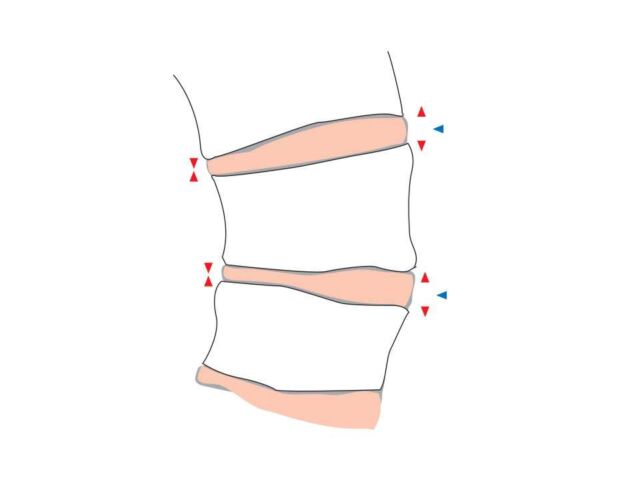
These goals, however, were established primarily as a result of the many scientific studies of full-time brace wear, in which the magnitude of correction in-brace can be somewhat limited. Alternatively, other bracing methodologies (specifically nighttime bracing) allow for considerably more correction in-brace. The tolerance for brace wear in the recumbent position provides the ability to apply hyper-corrective forces, effectively leveling out the forces across the growth plates entirely, or even providing for over-correction as high as 115%. Under these conditions, the vertebra are free to develop unrestricted and may progress towards a more corrective state. By creating such a scenario while the patient is sleeping and growth rates are at their highest, it is possible to achieve greater outcomes to that of more traditional daytime bracing, in a shorter amount of time and with greater tolerance for the patient.
In addition to nighttime bracing, recent developments in surgical approaches are taking advantage of growth plate development. Anterior vertebral body tethering (AVBT) has shown great promise in modulating vertebral growth. By altering the forces across the growth plates with targeted asymmetrical elastic compression, while at the same time maintaining flexibility and allowing for movement throughout the spine, the resulting growth pattern can be redirected towards more normal development.
